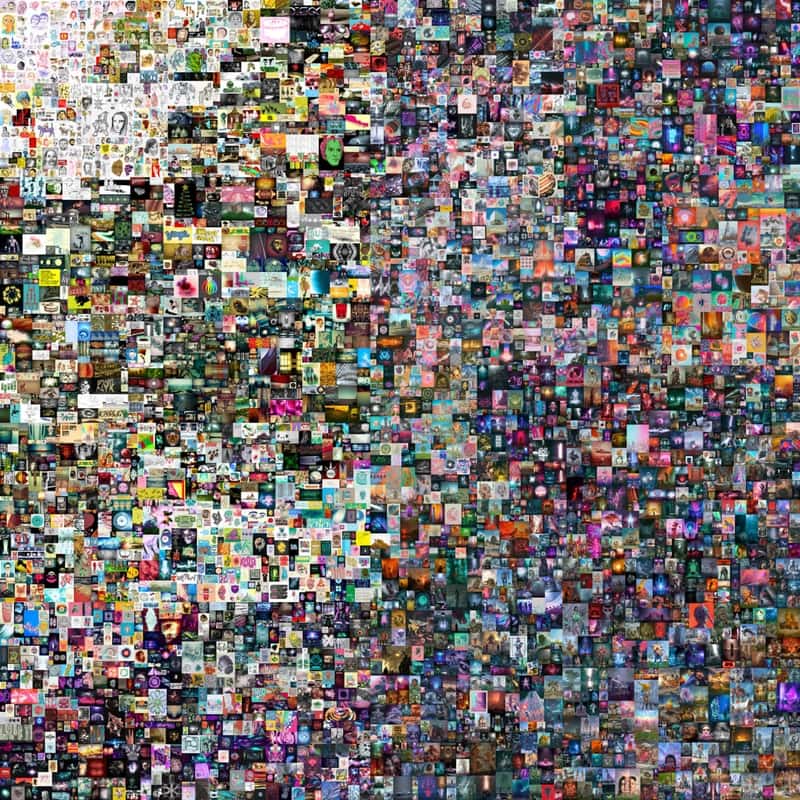NFTs: A New Era of Art Collecting and Ownership
An overview of NFTs, their applications, and what the future could hold for this technology.
Race morning started with a gut-punching 3 am wake-up. I prepared my usual race morning breakfast of oatmeal and coffee while my nerves and anticipation began to kick in. The morning was jet black, and a rain-soaked wind stirred about. After checking and loading the gear, Hannah and I drove to the race at 5 am.

An artist named Beeple just recently sold one of his digital artworks for over 69 million dollars. What stands out is not only the sheer price of the art but what the buyer technically purchased was several lines of code stored on a technology called the blockchain. What are these several lines of code? That is an NFT.
What is an NFT?
Let's break it down.
NFT stands for "non-fungible token".
Fungible or Fungibility is an economic term referring to the uniqueness of an item. For example, a fungible item would be something like a dollar since it can be easily converted to 4 quarters, ten dimes, or even just swapped with another dollar. There are no unique characteristics of a dollar from a value standpoint which gives it the ability to easily interchange.
The opposite is non-fungible items such as land, baseball cards, or even a car. Each of these items has unique qualities (location, condition, age) that prevent them from being directly exchanged.
What does an NFT do?
In its simplest form, think of NFTs as a permanent digital certificate of ownership. So, going back to the case of the 69 million dollar artwork, the buyer bought the digital certificate of ownership of this artwork (the NFT).
Why would someone buy this?
Digital items have the issue of being easily duplicated, copied, and modified. Since NFTs are immutable and no two are ever the same, it gives digital content the scarcity and individuality it lacks without it.
Therefore when applied to digital artwork, the NFT contract, which lives on the public Ethereum blockchain, can easily be verifiable.
Current & Future NFT Applications
The NFT technology has been drastically changing the art, collectible, and gaming industry in a lot of ways, spanning collectible sports cards, digital land, and curated art auctions. For artists tokenizing their digital artwork as NFTs, they now can sell to anyone in the world with an internet connection. On top of that, baked into the NFT contract, all future buying & selling of the artwork can have a royalty fee that goes back to the original creator. So the artist still gets paid for all future transactions of the NFT item.
Looking to the future, NFTs could have some interesting applications spanning multiple industries. Since NFTs are certificates of authenticity, for industries that are tracking ownership, distributing contracts, handling & verifying records, this technology could find its way as a possible alternative.
NFTs haven't been around for long so there is still a lot of room for innovation in this field. Even with media bringing NFTs into the spotlight recently, we are still far away from having widespread adoption of this technology. With all that being said, I believe this technology is here to stay and is going to continually become more mainstream as it integrates into different industries and more applications become apparent.
📚 Further Reading
If this article piqued your interest in NFTs, here are some additional sources you can explore:
- Opensea's NFT Bible - a wide-ranging comprehensive look at the ins and outs of NFTs.
- Tim Ferriss Podcast: Vitalik Buterin - a long-form discussion between, Tim Ferriss, Naval Ravikant, and Vitalik Buterin, the creator of Etheruem. They cover a lot of interesting topics and outline the past and future of this technology.
- A16z Podcast on NFTs
- Chris Dixon - NFTs and a Thousand True Fans